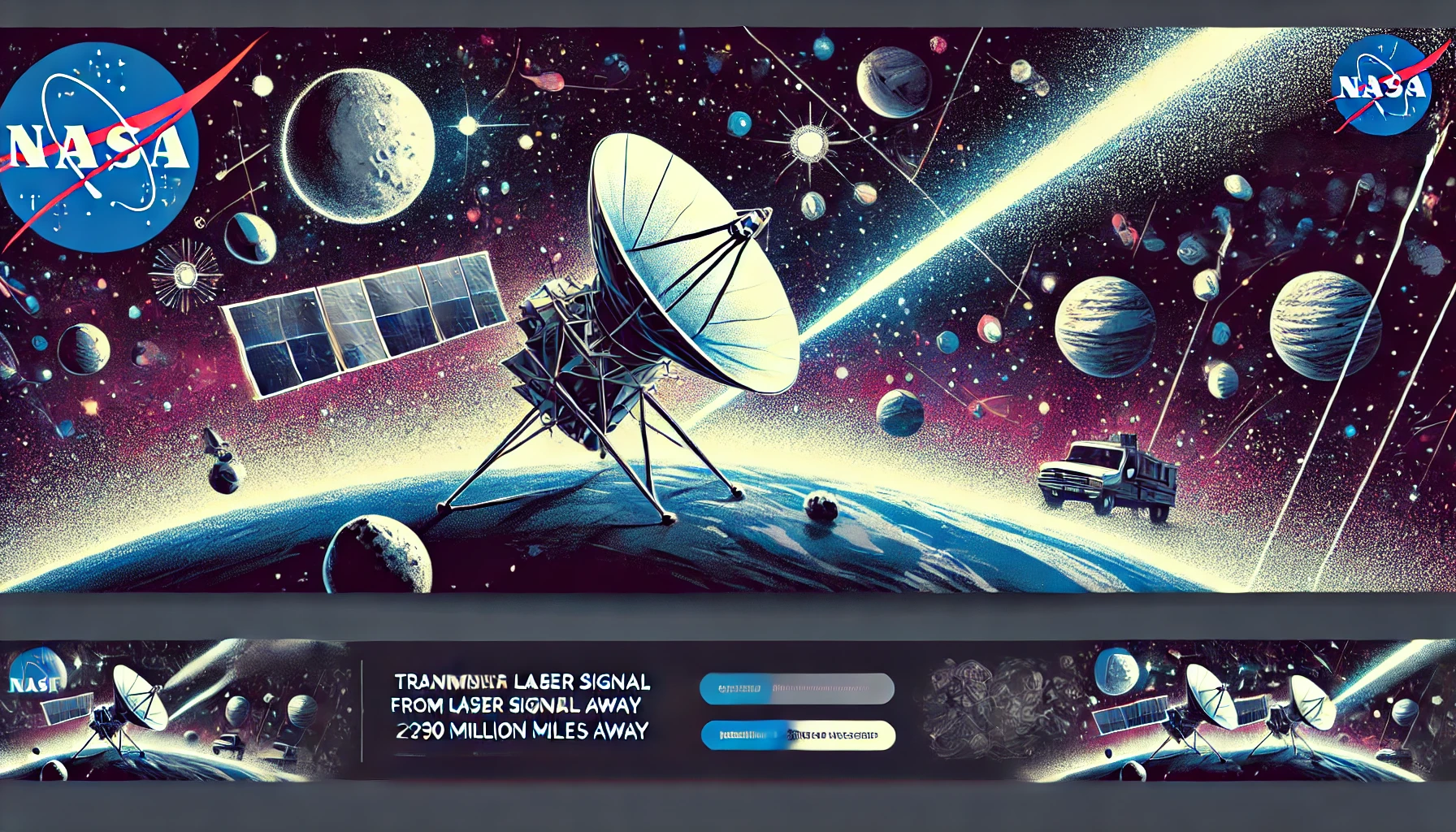The Psyche Mission: Exploring New Frontiers with NASA’s Laser Communication Technology
- Posted by Amelia Johnson (United Kingdom)
- Categories Science
- Date October 11, 2024
NASA’s latest milestone in space exploration has arrived with the Psyche spacecraft, which has successfully transmitted a laser signal from a staggering distance of 290 million miles. This groundbreaking achievement marks a significant leap forward in the capabilities of deep space communication. As the Psyche mission unfolds, it not only aims to explore the metallic asteroid Psyche but also showcases the potential of advanced technologies like laser communication.
Understanding the Psyche Mission
The Psyche spacecraft is part of NASA’s mission to study the unique asteroid that shares its name. Psyche, the asteroid, is thought to be a remnant from the early solar system and may provide insights into the building blocks of planet formation. By analyzing Psyche, scientists hope to uncover the secrets of planetary cores, particularly those made of metal.
Launched on October 13, 2023, the Psyche spacecraft is equipped with state-of-the-art technology designed to send and receive information over vast distances. Its primary goal is to reach the asteroid belt between Mars and Jupiter, where Psyche resides, and perform detailed studies of its surface composition and geological history(ScienceBlog.com).
The Importance of Laser Communication Technology
A key feature of the Psyche mission is its use of laser communication technology, specifically through the Deep Space Optical Communications (DSOC) system. This advanced technology allows for data transmission rates up to 100 times faster than traditional radio frequencies, marking a substantial improvement in space communication(ScienceBlog.com).
Benefits of Laser Communication
- High Data Rates: Laser communication systems can transmit large amounts of data quickly. For instance, the Psyche spacecraft achieved a maximum data rate of 267 megabits per second when it was approximately 33 million miles from Earth, a speed comparable to typical broadband internet(ScienceBlog.com).
- Reduced Size and Weight: Laser systems tend to be lighter and smaller than their radio counterparts, making them ideal for space missions where every ounce counts.
- Enhanced Accuracy: Laser communication requires precise alignment, which, when properly executed, can result in highly reliable connections over vast distances(ScienceBlog.com).
The Milestone Achievement: Sending a Signal from 290 Million Miles
On June 24, 2024, the Psyche spacecraft made headlines by successfully transmitting a laser signal from an impressive distance of 290 million miles. This achievement is a testament to the effectiveness of the DSOC system and the capabilities of modern space technology.
How the Laser Signal Was Achieved
The process involved a flight laser transceiver aboard the Psyche spacecraft and two ground stations on Earth. The historic 200-inch Hale Telescope at Caltech’s Palomar Observatory acted as the downlink station, receiving data from the spacecraft, while the Optical Communications Telescope Laboratory at NASA’s Jet Propulsion Laboratory served as the uplink station(ScienceBlog.com).
This milestone not only demonstrates the viability of laser communication for deep space missions but also paves the way for future endeavors, including potential missions to Mars and beyond(ScienceBlog.com)(Daily Express US).
Future Space Missions and Communication Advancements
The successful transmission of a laser signal from 290 million miles signifies the potential for future space missions to leverage similar technology. As NASA continues to push the boundaries of exploration, laser communication will play a crucial role in enhancing data transmission capabilities.
Implications for Future Missions
- Higher Capacity: Future missions could send vast amounts of scientific data, high-resolution images, and real-time video, improving the ability to share discoveries from the field.
- Interplanetary Communication: Laser communication systems could facilitate better communication between Earth and missions on other planets, providing a robust network for data exchange(ScienceBlog.com).
- Support for Human Exploration: As humans prepare for missions to Mars, reliable communication systems will be vital for ensuring safety and effective operation during these long-duration missions(ScienceBlog.com).
NASA’s Role in Advancing Space Communication
NASA has been at the forefront of developing advanced communication technologies, and the Psyche mission exemplifies its commitment to innovation. The agency’s focus on improving space communication systems is crucial for the success of both robotic and crewed missions in the coming decades.
The DSOC Experiment
The Deep Space Optical Communications (DSOC) experiment is a key part of the Psyche mission’s objectives. This initiative seeks to establish a framework for future optical communications in deep space, where the challenges of distance and signal degradation are significant(ScienceBlog.com).
A New Era in Space Exploration
The successful transmission of a laser signal from the Psyche spacecraft, a distance of 290 million miles, represents a remarkable achievement in the field of space communication. As NASA continues to advance its technologies, we can expect laser communication to play a pivotal role in future space missions.
The Psyche mission not only aims to unlock the mysteries of a unique asteroid but also sets a precedent for how we communicate with spacecraft deep in the solar system. By harnessing the power of laser technology, NASA is paving the way for more efficient and effective exploration, ultimately expanding our understanding of the universe.
For further information on space exploration and technology, visit Regent Studies to access a variety of educational resources.
To stay updated on NASA’s exciting advancements and future missions, check out NASA’s official website(ScienceBlog.com)(Daily Express US).
Next post




